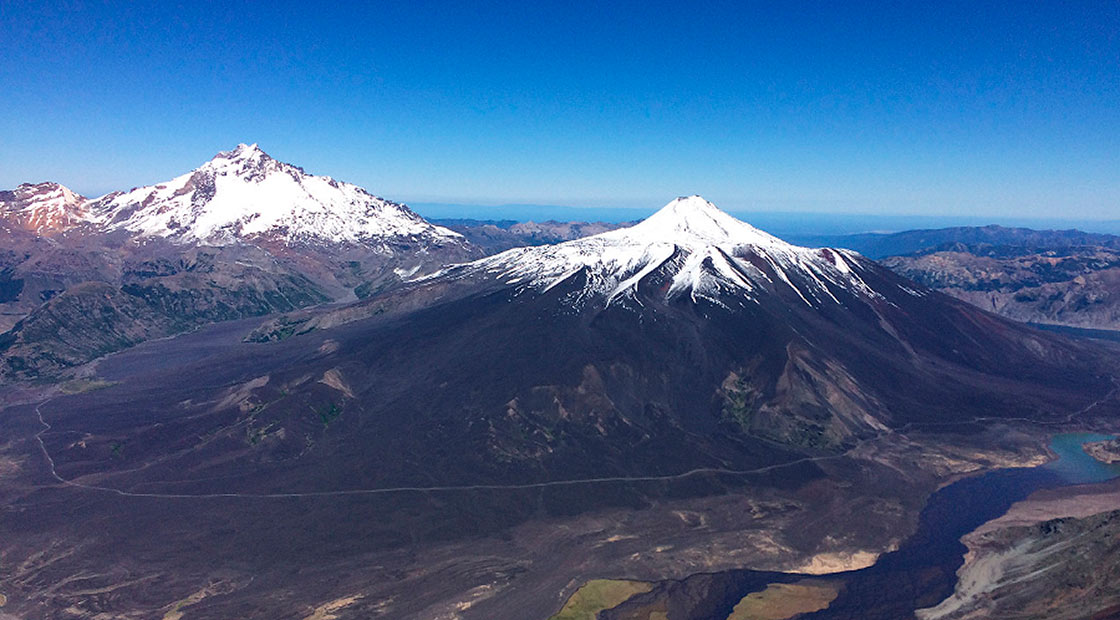The project led by Dr. Millaray Curilem will allow identifying changes in the activity of a volcano based on the temporal analysis of its seismic behavior and the localization of the seismic source.
Chile currently has 92 active volcanoes and about 16% of the national territory is under the direct influence of these mountain massifs that in our country’s history have shown their capability to cause major disasters that can happen at any time. According to experts, major eruptions occur each eight to ten years. Based on that, a group of scientists of the Universidad de La Frontera (UFRO) carried out a study with the objective of supporting the monitoring of the present volcanoes across the country and especially in the La Araucanía Region, where the volcanoes Llaima and Villarrica are located.
The project ‘System for the evaluation of the activity of a volcano through automatic analyses of the behavior of its seismic signals and the generation of alerts in the event of conditional changes’ was financed by the Chilean Fund for the Support of Scientific and Technological Development (FONDEF) of the Chilean National Agency for Research and Development (ANID). The person in charge of the project was Dr. Millaray Curilem Saldías, who holds a Ph.D. in Electrical Engineering, with specialization in Information Systems, of the Federal University of Santa Catarina in Brazil. She was also the one who led the closing ceremony of the project, with the presence of academic authorities and representatives of the National Geology and Mining Service of Chile (Sernageomin).
It was the third project in this field that the group led. In this context, Dr. Curilem explained: “We are very fortunate that the Southern Andes Volcano Observatory is located here in the city of Temuco, since it offers an enormous amount of data, which we are able to process thanks to the tools we have.” The researchers´ work, in which also a group of UFRO undergraduate and graduate students participated, seeks to find an IT tool to identify changes of the activity of a volcano based on the temporal analysis of its seismic behavior and the localization of the seismic source. “The analysts of Sernageomin have to analyze about four thousand hours of data. That is a lot of time and the system we are developing supports this analysis. The idea is not to replace the analysts, but to simplify the data processing. Especially when it comes to the alerts that need to be placed regarding certain events, the system becomes a significant support for the analysts,” Dr. Millaray Curilem added.
Regarding the possibility of developing a monitoring system to predict the occurrence of volcanic eruptions, Dr. Curilem explained that, depending on certain requirements, it could be possible. “The key is to detect any major changes in the seismic activity or any other variable of the volcano in time, because the earlier I am able to detect it, the faster I can predict an eruption and issue the warning. The problem is that, for example the Calbuco volcano did not present any changes from the seismic point of view until shortly before the eruption. It was not early enough to be able to issue an early warning,” she pointed out.
UFRO RESEARCH
With regard to the completion of this Project, Franklin Valdebenito, the director of the Office of Innovation and Technology Transfer of UFRO, congratulated the research team, led by Dr. Millaray Curilem, for their work. “This line of research and this project achieved to create a technology that was intellectually protected and we hope soon to be able to transfer it to Sernageomin and the Southern Andes Volcano Observatory (OVDAS). With that step, we would complete the cycle we want for our projects, in which we achieve development but also a transfer for the benefit of our community,” he said.
Dr. Jorge Farías Avendaño, the dean of the Faculty of Engineering and Science, commented: “This project contributes to the region´s development and knowledge within the volcanic area. With our experience as a university and faculty, we will be able to support the monitoring of volcanoes, using state-of-the-art technology, as for example AI or data analyses that respond to the needs that arise from the inhabitants themselves.”
Rodrigo Órdenes, the director of OVDAS, added: “This project takes some pressure off the analysts, since it decreases their workload. That way, they can better focus on the secondary work and processing, which would allow them to outline the activity of a volcanic system with major precision, in order to provide better information to the authorities regarding possible volcanic events that may occur in the future.”


